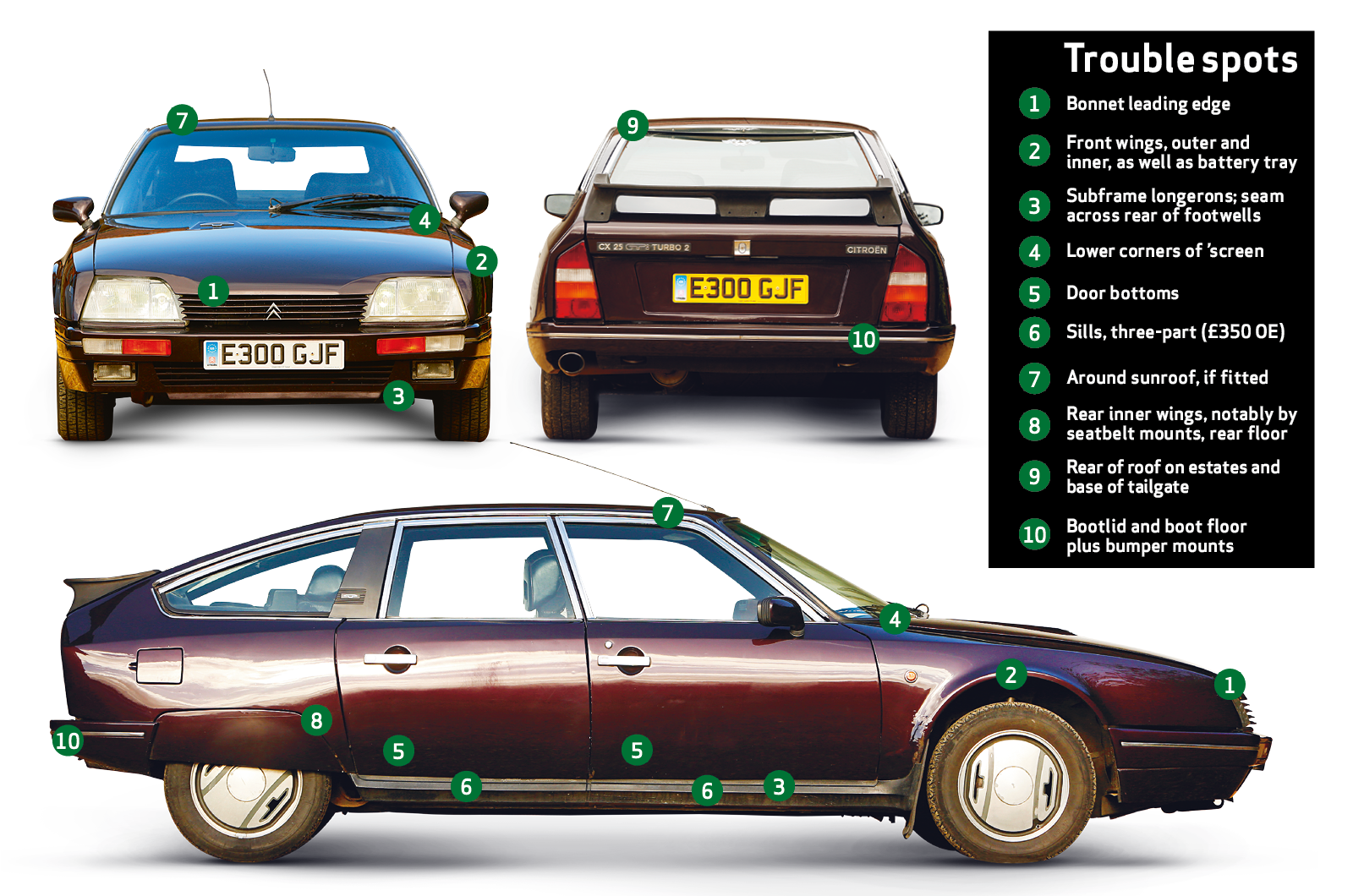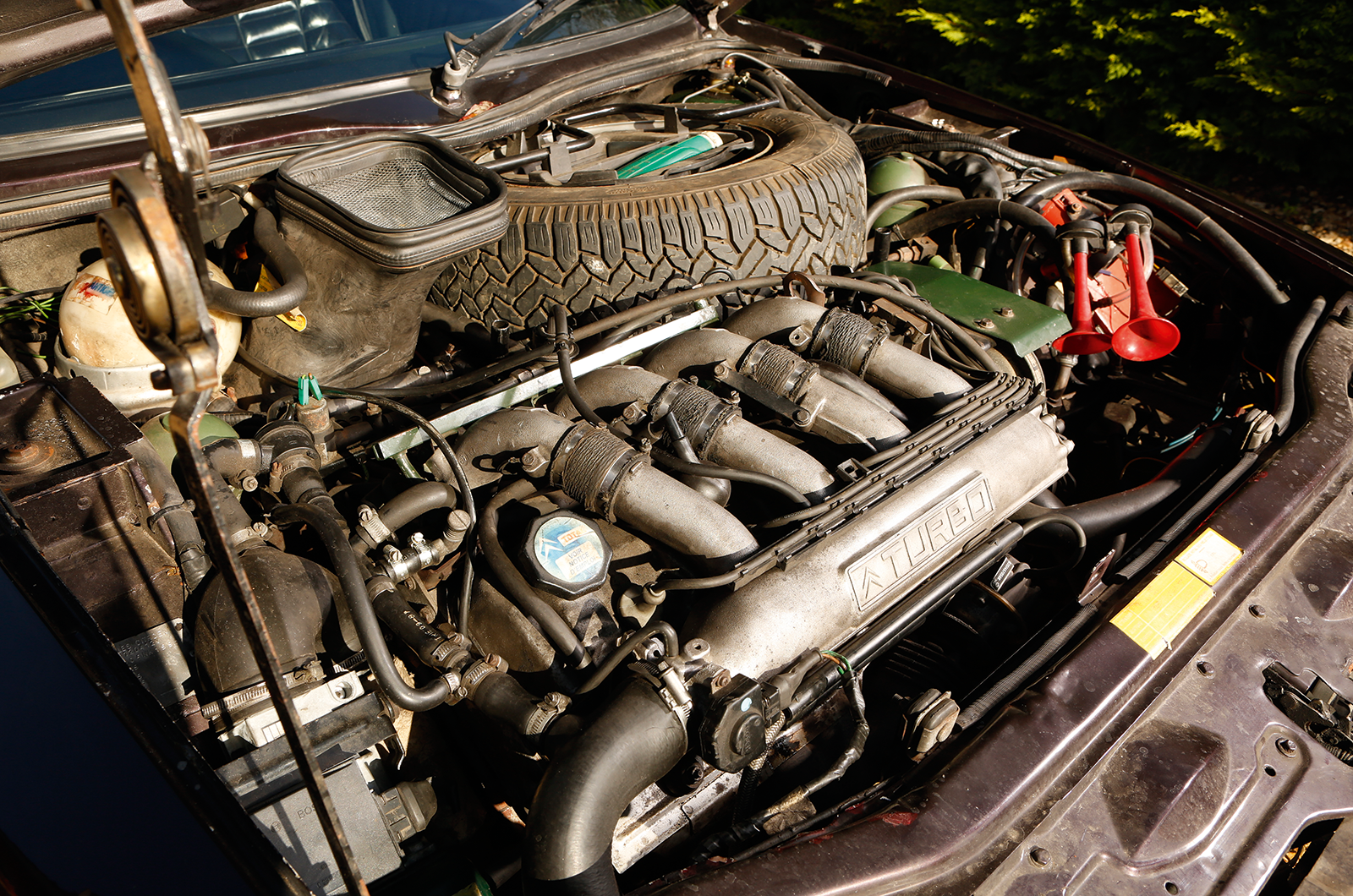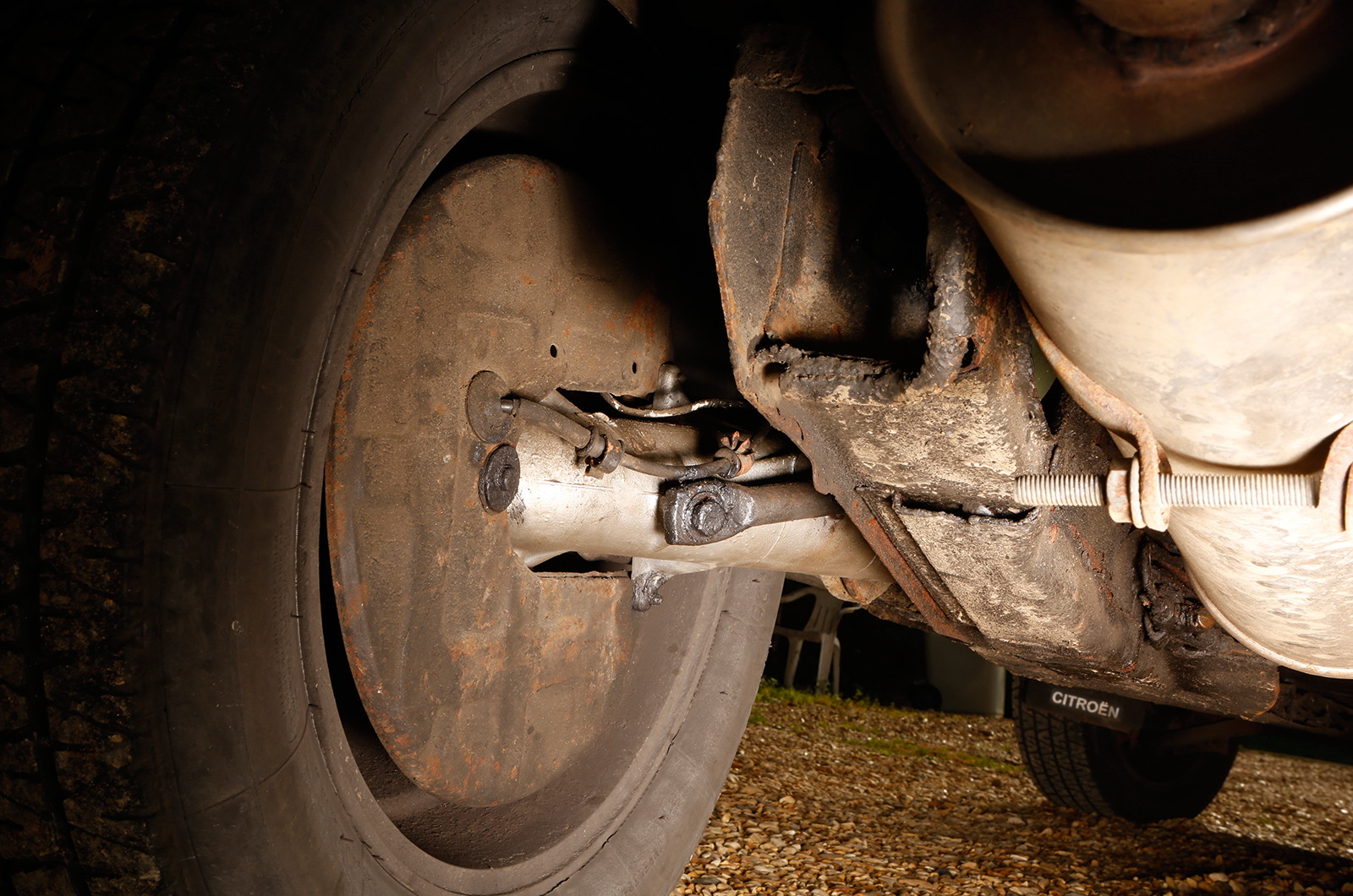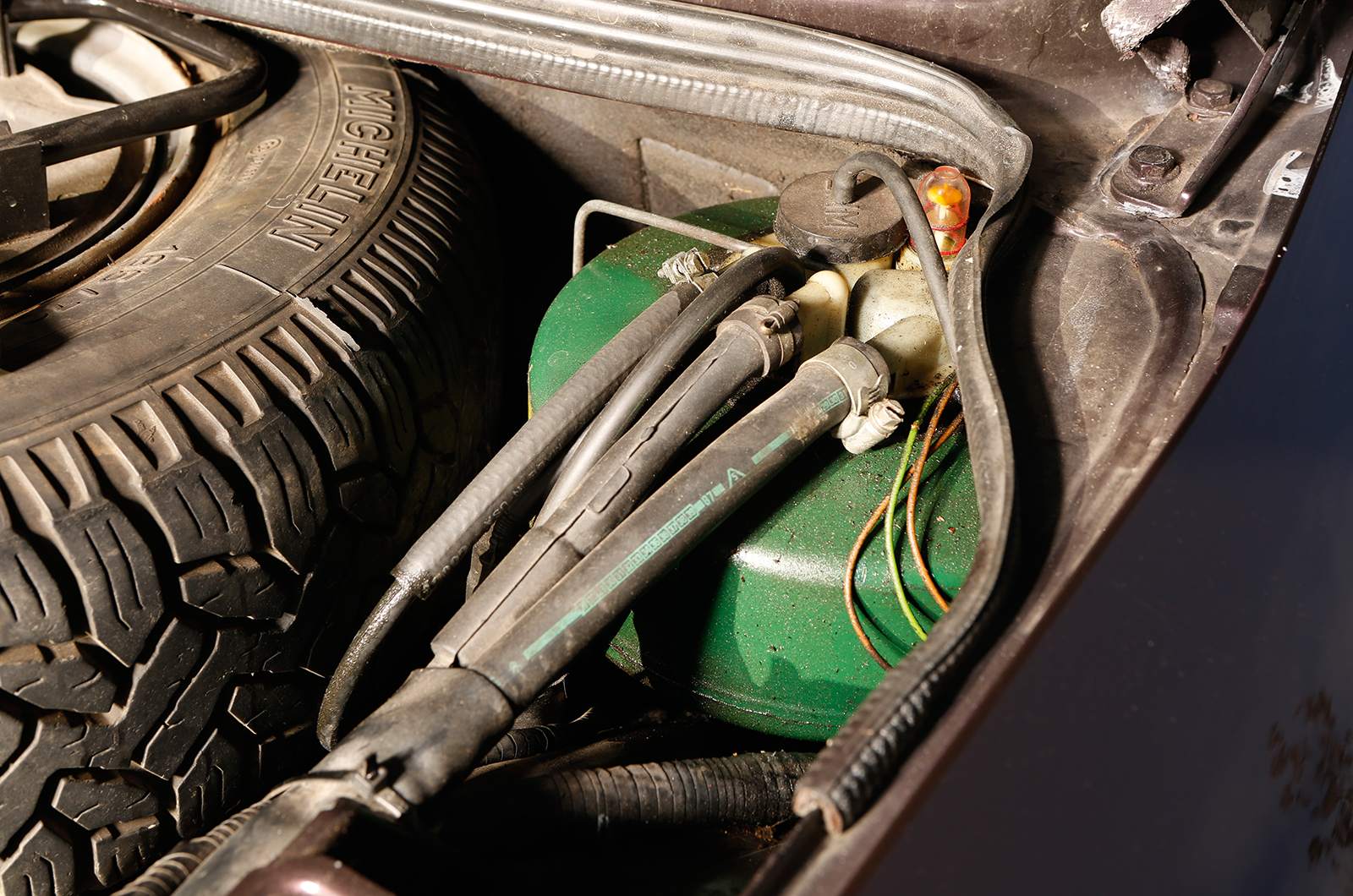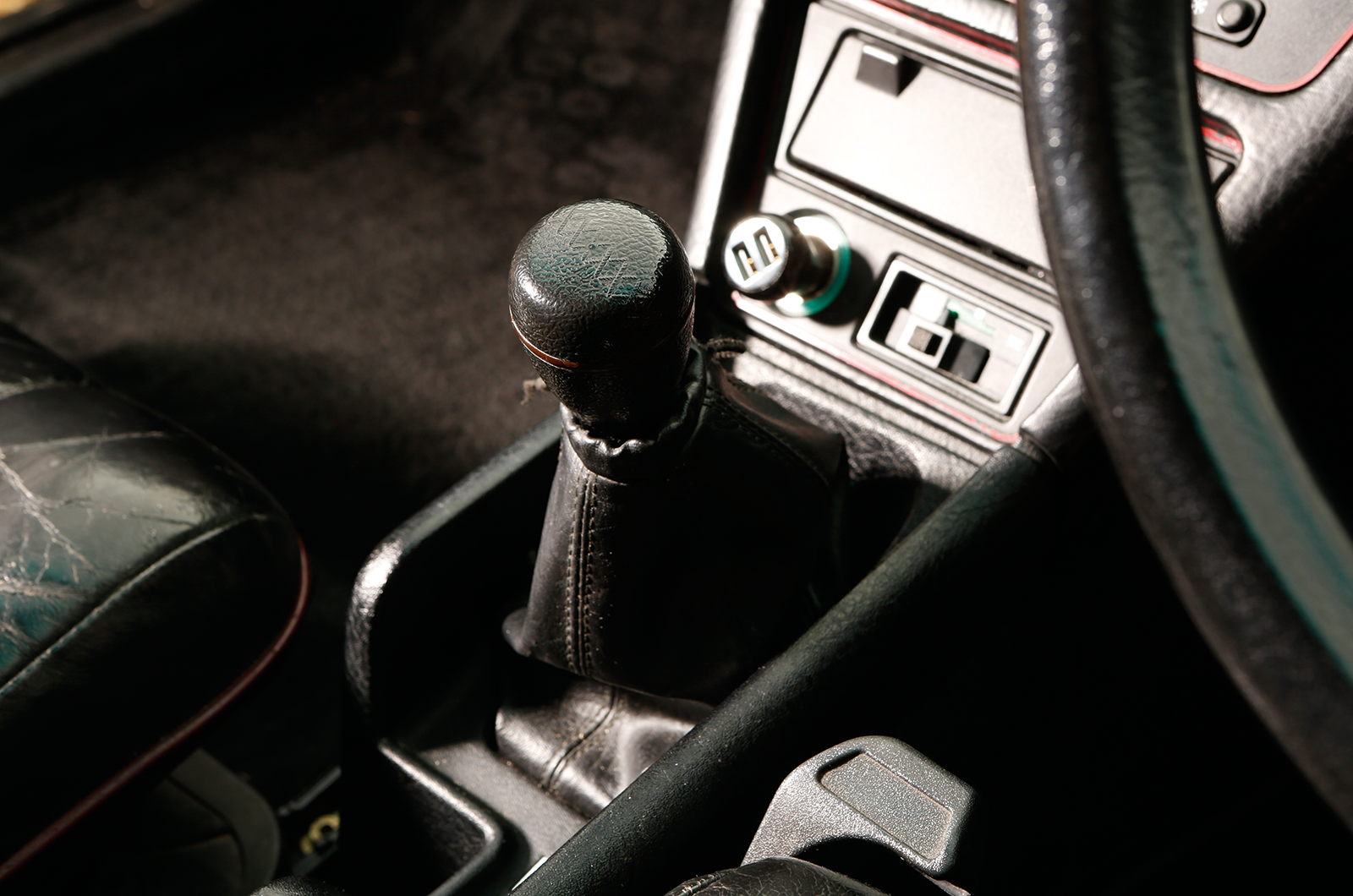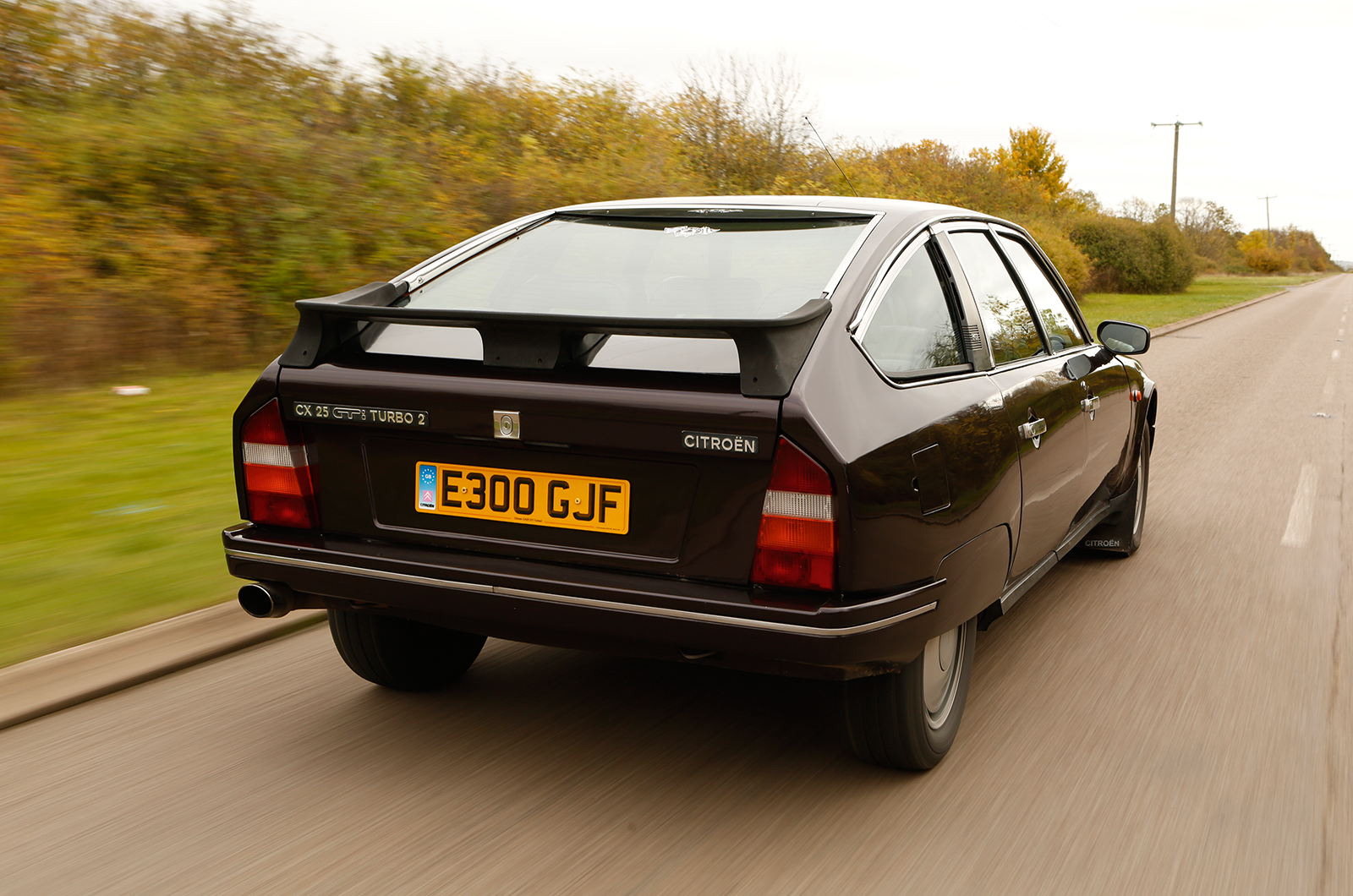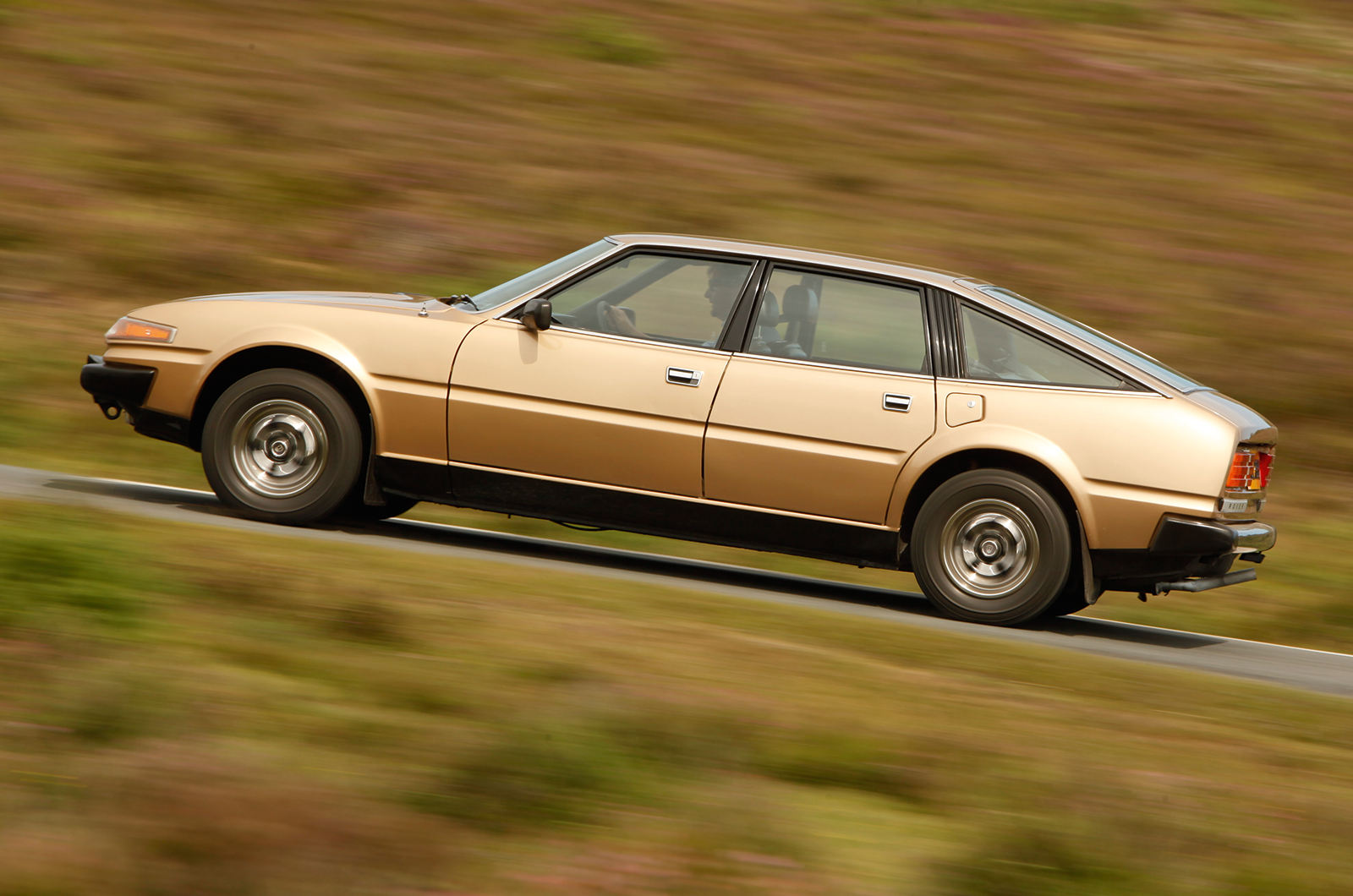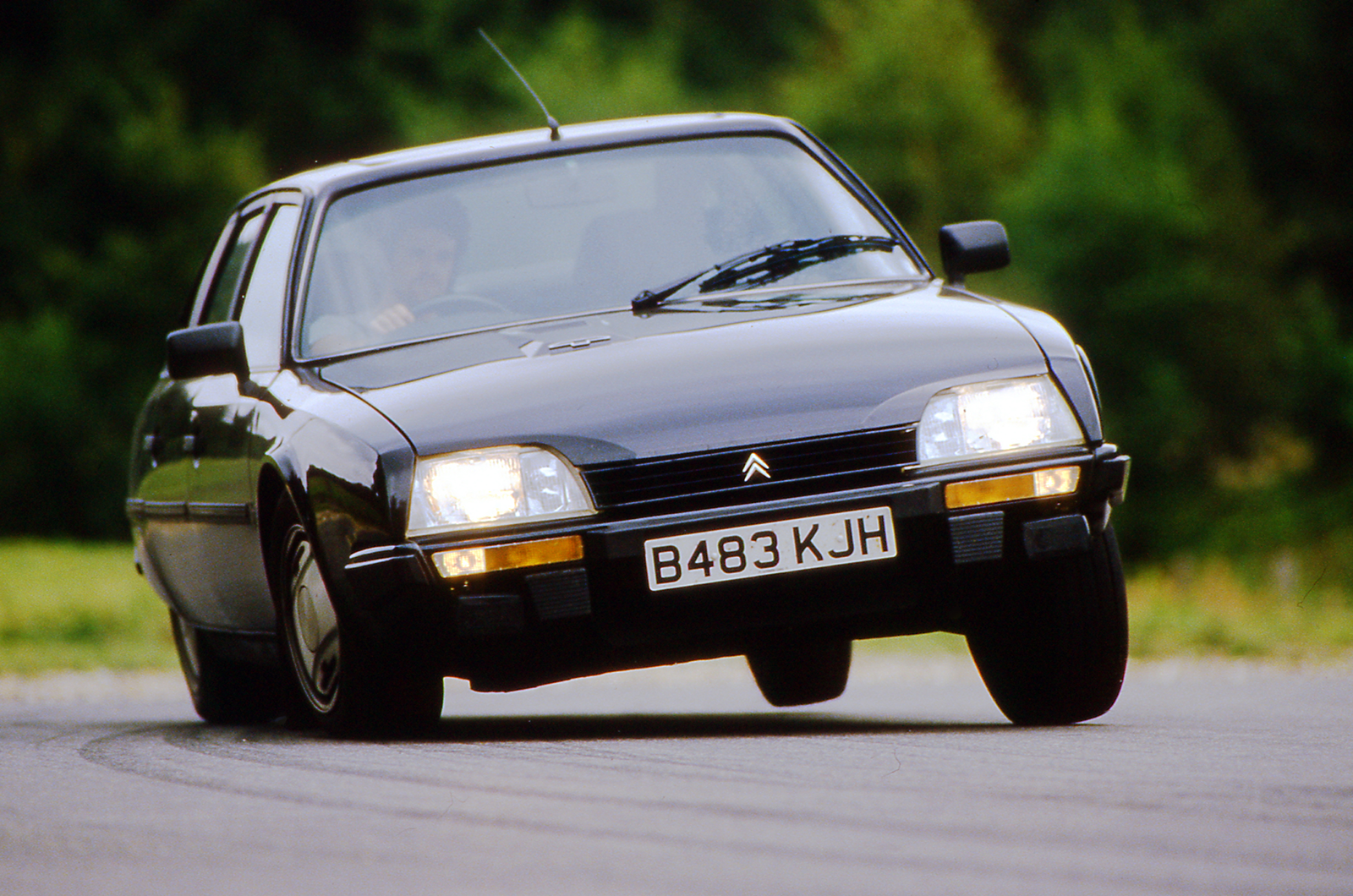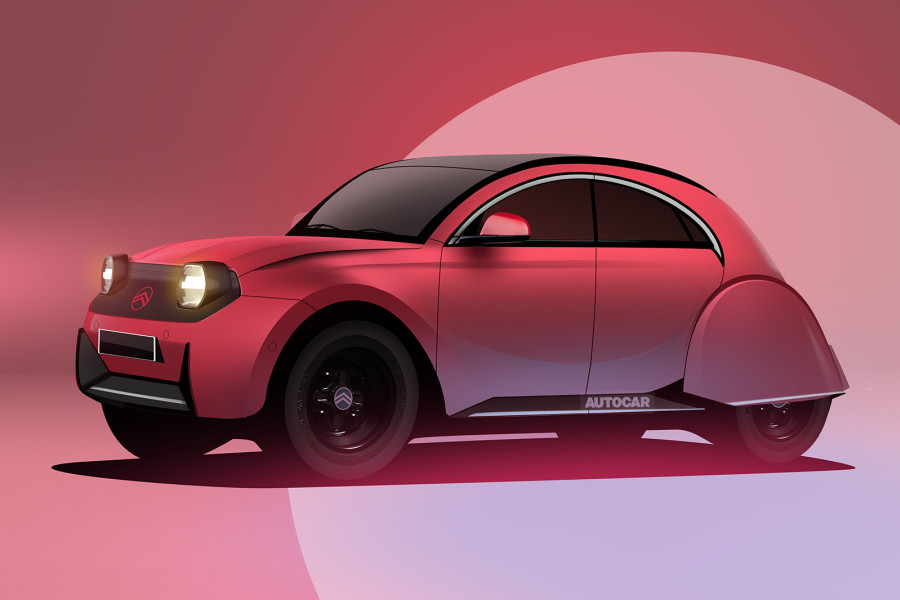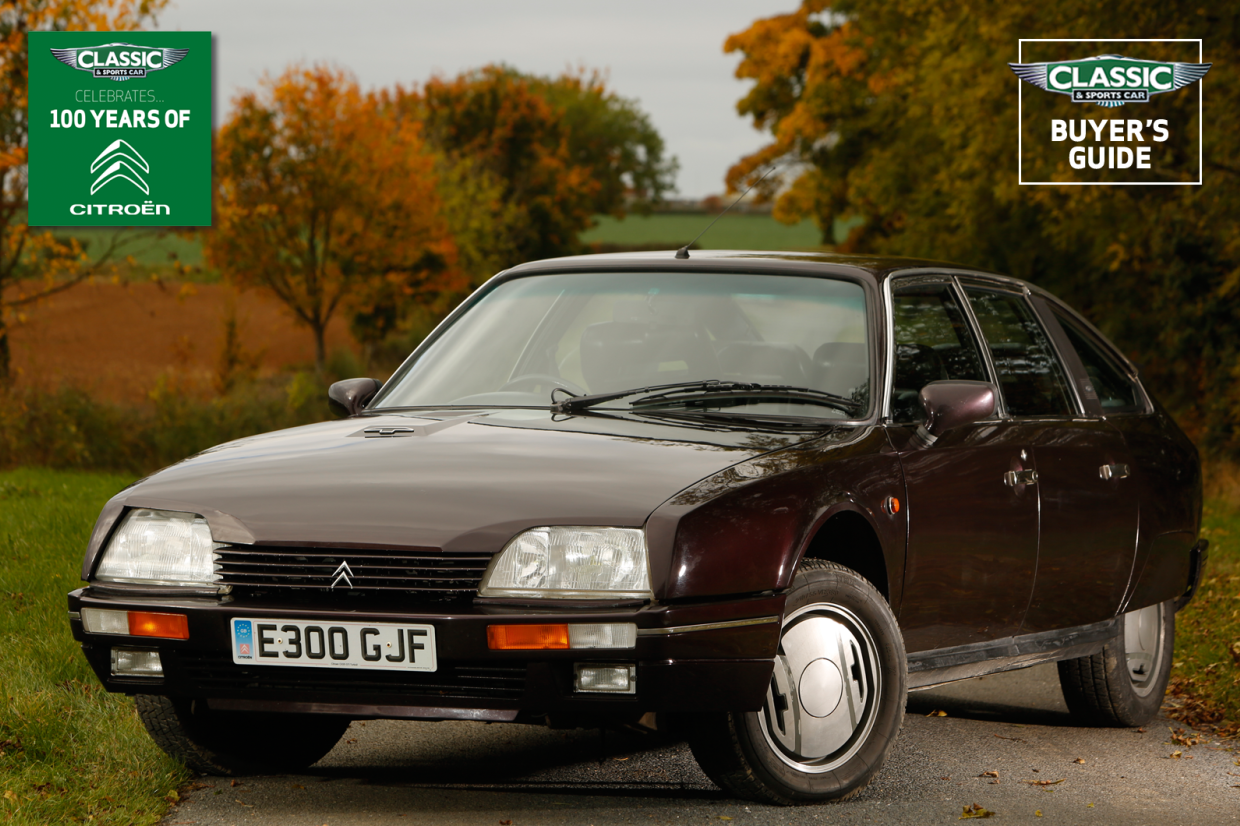
Why you’d want a Citroën CX
The sensational CX initially came with warmed-over DS pushrod engines instead of the triple-rotor Wankel or the twin-cam flat-four planned in cahoots with NSU, but it would eventually come alive with the GTi.
Ultimately, the late-’80s 168bhp Turbo could propel the car’s highly streamlined bodyshell to a heady 138mph. The mainstream models are not so performance orientated, although they all have many desirable features – not least that Citroën trademark fluid cushion ride that manufacturers today (even Citroën) seem unable to replicate.
For supreme refinement, on the CX the entire running gear was mounted in subframes linked by locating members, joined to the body by 16 flexible mountings.
If this all sounds appealing, now is the time to buy a CX – before they rot or the world wakes up to their exceptional qualities. There are already fewer CXs on the road than DSs, and they are costlier to rebuild. Major panels such as wings are welded on and the more complex pressings mean that fabricating repair panels may well be beyond the resources of the DiY restorer.
The last big Citroën designed without external influence is only now starting to attract attention in its home country. Quite a few left-hand-drive examples are spreading across Europe from France due to greater interest in the UK.
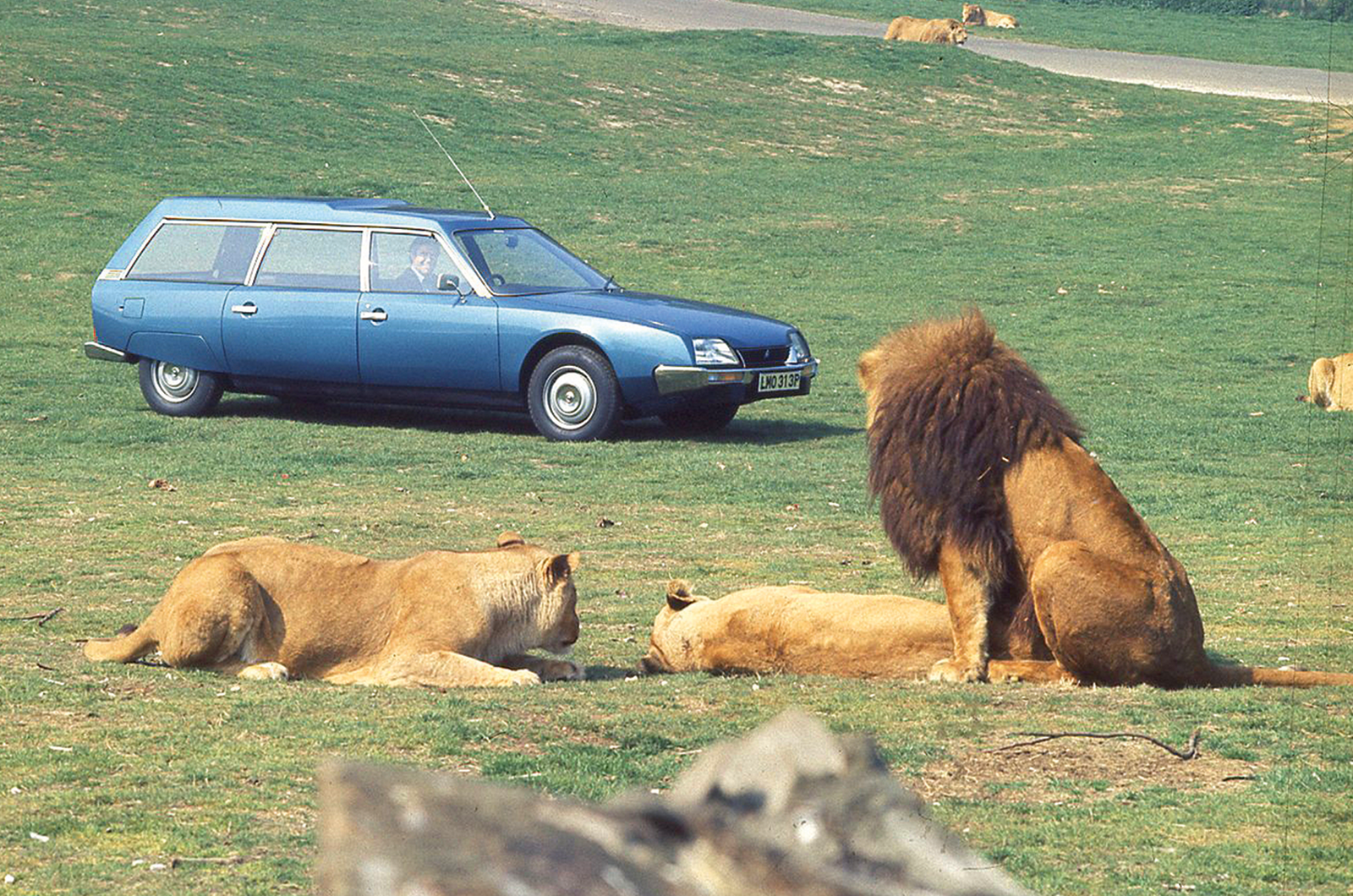

(l-r) A Safari in a safari park. Early cars had chromed bumpers; Motor-backed DTR Turbo set diesel class records in 1987

